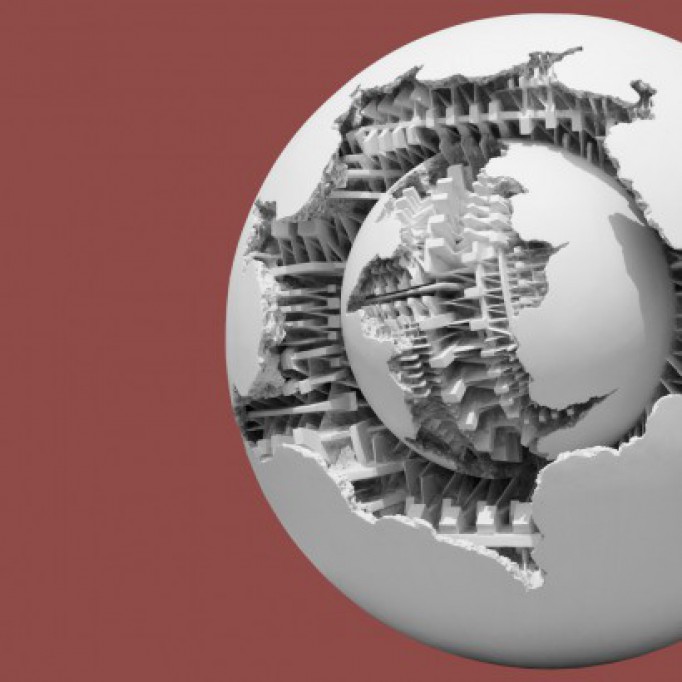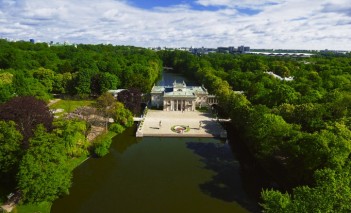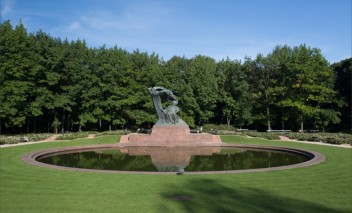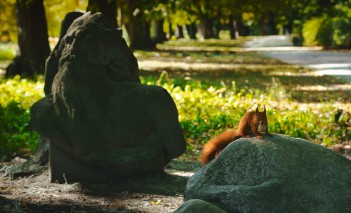Exhibition: Arnaldo Pomodoro ‘Sfera con sfera’

‘Sfera con sfera’ – the monumental sculpture of the fiberglass by Arnaldo Pomodoro, one of the most important contemporary artists, is on display at the Royal Łazienki Museum. It can be seen in the Modernist Garden at the New Orangery.
Arnaldo Pomodoro is considered one of the most important contemporary artists: one of the few whose work is on display in the Vatican. His works dating from the 1950s are high-reliefs, in which a singular form of "writing" emerges that was previously unknown in sculpture, and which aroused the interest of Italy's most prominent art critics. In the early 1960s, he ventured into three-dimensional forms, investigating geometrical solids - by eating away at the surface and causing corrosions and fractures and perforations, he shattered their perfection thereby revealing their interiors.
In 1966, he was commissioned to make a sphere, three and a half metres in diameter, for the Expo in Montreal. Now in front of the Farnesina in Rome, it marks his shift towards monumental sculpture. This was the first of his many works that have since been installed worldwide in public places of great symbolic importance and appeal (Milan, Copenhagen, Brisbane, Los Angeles, Darmstadt, Caracas, Cologne, and Paris).
Creative inventions on the theme of the "sphere" are among his most important works: Sfera n. 1, 1963, housed at the MoMA in New York; the Sfera con sfera, 1979-80 (a version of the fibreglass exhibited at the Royal Łazienki Museum) at the Hakone Open Air Museum in Kanagawa; the Sfera con sfera, 1982-83 (in three versions, located at Trinity College in Dublin, at Tel Aviv University and in Monaco respectively); the Sfera con sfera, 1991 (a version in front of the Amada Hotel in Tokyo and the "artist’s proof" in the plaza of the United Nations building in New York). In 1990, for the Cortile della Pigna in the Vatican Museums, he designed and created a sphere four metres in diameter - Sfera con sfera - which is perfectly calibrated in these exceptional surroundings.
Sfera con sfera reflects the antithetical responses of today’s world with its own complex mix of imagery that can be read, alternately, as organic and therefore human, or technology-oriented, by reason of complex the interior forms that resemble gear teeth. In particular, a sphere containing another sphere, burgeoning up from within it, can be read as a metaphor promising the rebirth of a less troubled and destructive world.
Pomodoro has said:
- A sphere is a marvellous object, from the world of magic, wizards, whether it is of bronze, or full of water; it is also the mother’s womb. I think... It reflects everything around it, creates bizarre contrasts, transforms the usual reflection of the environment. This is the purpose of creating each successive sculpture like this: to try to break this ideal form of magic, to hope to find in it inner contradictions, the mysterious and the real.
- That’s what drives me to make the spheres: breaking these perfect, magic forms in order to reveal their internal ferment, mysterious and alive, monstrous and yet pure; so I create a discordant tension, a conflict, with the polished shine: a unity composed of incompleteness.
- In my sculpture, the shape of today’s world contains within itself the form of the "ideal city" as conceived by the artists of the Italian Renaissance. This, in turn, contains my hopes and dreams, and those of countless other citizens of the world.
- It is the longing for the "ideal city" that manifests itself in the works of Italian Renaissance artists and gnaws at the minds of contemporary people of art and science.
Arnaldo Pomodoro was born in 1926 in Morciano di Romagna near Pesaro. He lived and worked in Milan. His work can be seen in public spaces throughout the world. Pomodoro was active in the field of stage design creating "spectacular machines" for numeral theatrical performances. In 1992 he was awarded an honorary degree in literature by Trinity College in Dublin, and in 2001 the University of Ancona awarded him an honorary degree in civil engineering and architecture. He died in 2025 in Milan.






